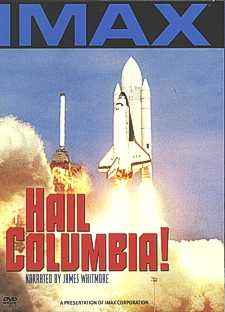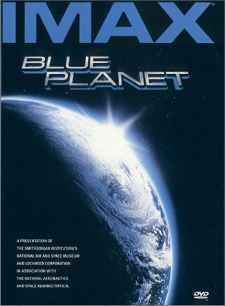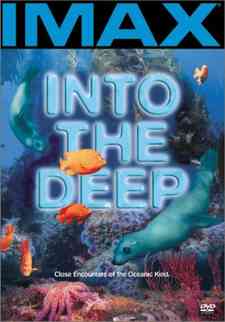|
|


TechnoFILE is copyright and a registered trademark © ® of
Pandemonium Productions.
All rights reserved.
E-mail us Here!

"Imax Classics" on DVDBig Screen Wonder on DVD from WarnersHail Columbia Warner Home Video continues its excellent collection of IMAX films on DVD with a trio of space-based titles that'll delight fans of the space program. Hail Columbia is, in some ways, the best of the three - and the worst. It's the best because it takes a single subject, the genesis of the space shuttle, and follows it through to its maiden voyage. It's the worst because it's older and the audio, while good, is so obviously analog-based and this shows up as a lack of oomph and surplus of distortion during the all important launch scenes. Hail Columbia takes you aboard the first of America's space shuttles for its maiden voyage, letting you experience one of mankind's greatest achievements: the quest to take space travel out of the realm of the extraordinary and make it no more special than taking a pickup truck or a bus to the next stop on the line. The film offers a lot of behind the scenes stuff featuring astronauts John Young and Robert Crippen as they get ready for the historic launch that opened up the age of the reusable space ship. But it's the shuttle footage that is really worth the price of admission, though as mentioned the analog audio gets in the way of really feeling the thunderous noise and vibration of the liftoff. At the mission's end, we get to watch Columbia return to earth at Edwards Air Force Base in California, where crowds of ordinary American citizens are waiting to celebrate the dawn of the second phase of mankind's conquest of space. It's terrific stuff. Mission to Mir recounts a much later shuttle mission as American astronaut Shannon Lucid rides the shuttle into orbit and a months' long journey to the Russian space station that, alas, no longer exists. It's history and science rolled together, as well as a paen to international cooperation in the aftermath of the Cold War. Filmed mostly in space by American astronauts, Mission to Mir looks at the relationships between Mir's cosmonauts - of whatever nationality - as they live and work in the zero-gravity environment of orbital space. There's plenty of great footage both inside and outside and you get a real feel for what life is like in the cramped confines of mankind's early attempts at building habitats in space. This is a pretty politically correct IMAX film, alas, but that doesn't overshadow its excellent points. Destiny in Space is a more "generic" release in that it doesn't cover a particular space mission but, rather is meant as a tribute to the spirit of our extraterrestrial exploration. Narrated by Leonard Nimoy, it almost makes you feel as if you're in space as it presents IMAX's high quality images and sounds. One of the best scenes puts the IMAX camera onto a satellite and kicks it into higher orbit, where it can look down not only upon the blue Earth below, but upon the space shuttle that took it into orbit, floating in space between camera and planet. It's wonderful! We get to look inside Spacelab, float through the corridors of the shuttle, watch the astronauts undergo experiments into space sickness, living and working in space and learning what a human body requires in order to live in that environment, all in brilliant big screen color. There's other footage, too, simulated stuff of Venus and Mars and looks at Jupiter and, thanks to footage of and from the Hubble Space Telescope, the outer reaches of our galaxy. Destiny in Space is more than just a look at the space we know now, but is a look ahead to the space we should, and will, get to know in the not too distant future. Audio and video quality are both excellent. The films are not in anamorphic widescreen, unfortunately, but are presented in their original 4x3 IMAX aspect ratio; however, if you stretch them to fill the screen you get a most acceptable results. Some of the footage uses split screens or partial screens, which may
be hard to see on a smaller television. Remember, this stuff was created
to be shown on the giant IMAX screen, so the bigger the screen you can
use at home the happier you'll be. The producers also make excellent use of the 5.1 channels of surround sound, with voices coming at your from all around the home theater, depending on what's happening. And, with the abovementioned exception of Hail Columbia, the audio quality
is first rate. The Dream is Alive was released in the mid 1980's and is a wonderful introduction to the space shuttle program. Shot in great part aboard the ill-fated "Challenger," the IMAX film takes you into orbit with the shuttle astronauts as they live and work in the zero gravity environment of space. The images are spectacular, whether they're shooting a satellite capture, space walk, or just gazing down lovingly on the beautiful Earth below. Space fans will eat this film up with a spoon! The video is wonderful, though since it's presented in the original IMAX aspect ratio is isn't in anamorphic widescreen. Still, the picture's so good that even zoomed to fill a widescreen TV it still holds up very well. The audio has been remixed into Dolby Digital 5.1 and they've done a wonderful job of positioning sounds around the room. And make sure, if you have a subwoofer, that you're prepared for shaking walls when the shuttle takes off! Blue Planet isn't so much a space feature as it is a case of interplanetary navel gazing. Through the gorgeous IMAX imaging, we get a look down on our planet as it's seen from space, looking at our home as a single eco system where all is connected. 
It's basically an ecological tale and a plea for us to get our environmental act together lest the Blue Planet become a little black rock in space. Shots from space are counterpointed with aerial shots of the same areas as shown from above, which is kind of neat. The tree hugging gets a little blatant and almost overbearing in an age where we're struggling with finding a balance between the environment and the economy - and certain science (i.e. "global warming") is taken as fact when it has yet to be proven, but that can be forgiven in the grand scheme of things. T-REX Back to the Cretaceous is more of a docu-drama than the strict documentary one normally associated with IMAX until recently. Converted down to 2D from its 3D origins, it tells the tale of a young girl, Ally Hayden (Liz Stauber) who wants to be a palaeontologist following in the footsteps of her father (Peter Horton). He won't take her on digs with him yet, which she really doesn' dig, but in the meantime she starts doing her own research and theorizing. Then fantasy takes over and she's whisked into a computer generated past where dinosaurs live and hunt - and she has to run for her life. They manage to slip quite a bit of science into the drama, including some interesting stuff on working a dig, and that's great. The production as a whole, though spotty in its focus, is enjoyable and interesting and the wonderfully clear IMAX images and sound work well on the DVD - though as with the other films reviewed here they aren't enhanced for 16x9 TV's. The location shoots are beautiful. Most of the exteriors were done in southern Alberta dinosaur country, about an hour from where this review is written and the desolation of the Badlands looks almost beautiful when viewed through the lens. Leave it to IMAX to impart a sense of wonder! 
This title, originally a 3D offering, offers a wonderful and watery look at the Pacific Ocean off California. Kate Nelligan narrates this view of a "kelp forest" and those who inhabit it. We get to see spectacular images of the forest itself, and such nifty and interesting flora and fauna as underwater views of sea lions in their element, an incredible number of squids who mate and then shuffle off their mortal coils. The film starts with a shot of the ocean along the California coastline we're about to dive into, then takes us directly into some spectacular shots of the huge kelp plants waving in the current. It's beautiful, spectacular, and awe-inspiring at the same time, and the narration is minimal enough that it rarely gets in the way of the visual grandeur. And that isn't all. This kelp forest is simply teeming with colorful life, and we get to see it in spectacularly sharp and colorful images. The picture quality is outstanding, and the remixed Dolby Digital 5.1 soundtrack is also very good (though there isn't an abundance of surround info). The disc's package says there's a behind the scenes featurette on the DVD, but if this is the case we've yet to find it. You do get a quick trailer for IMAX on DVD, which seems kind of silly since you must already have an IMAX on DVD disc in the player in order to see it, but what the hey. The picture is spectacular, indeed, but it's also fullscreen (4x3) which, while the original aspect ratio, means it needs to be stretch and/or zoomed to fill 16x9 TV's. There isn't really anything that can be done about it, of course; it's something that has to be lived with and as such it isn't too high a price to pay for the gorgeous shots we see. 
Survival Island brings famed nature media guy Sir David Attenborough to the world of IMAX, and it's a nice mix. He gives us a fascinating look at a beautiful but extremely remote island between South America and Antarctica. South Georgia Island is a lovely rock, home to a breathtaking array of wildlife, from gigantic elephant seals (which weigh up to 6000 pounds and dwarf a man), various penguin species, and albatross. We get spectacular looks at all these critters, thanks to the IMAX camera's wonderful image resolution, as we watch the ebb and flow of life in this cold and harsh environment where humans are the outsiders. The photography, not surprisingly, is spectacular as the huge IMAX picture is brought to the ultra high resolution DVD medium. As with the other IMAX films reviewed here, the quality is terrific, though we wish that they'd release these films in anamorphic widescreen (why not just include the black bars to the side of the "full frame" picture?) so owners of 16x9 aspect ratio TV's could enjoy these spectacular images in the highest resolution possible. Still, even stretched and/or zoomed, the movie offers and outstanding picture that's full of shots that make you wonder how the heck the did it. And the sound, remixed into Dolby Digital 5.1 surround, is equally breathtaking. You even get an extra a short featurette on the making of the film, which shows how they got some of those shots. In all, a welcome addition to the IMAX DVD catalog.
|
|
|
|
|
| Support TechnoFile via Paypal |
| TechnoFILE's
E-letter We're pleased to offer our FREE private, subscription-based private E-mail service. It's the "no brainer" way to keep informed. Our Privacy Policy |